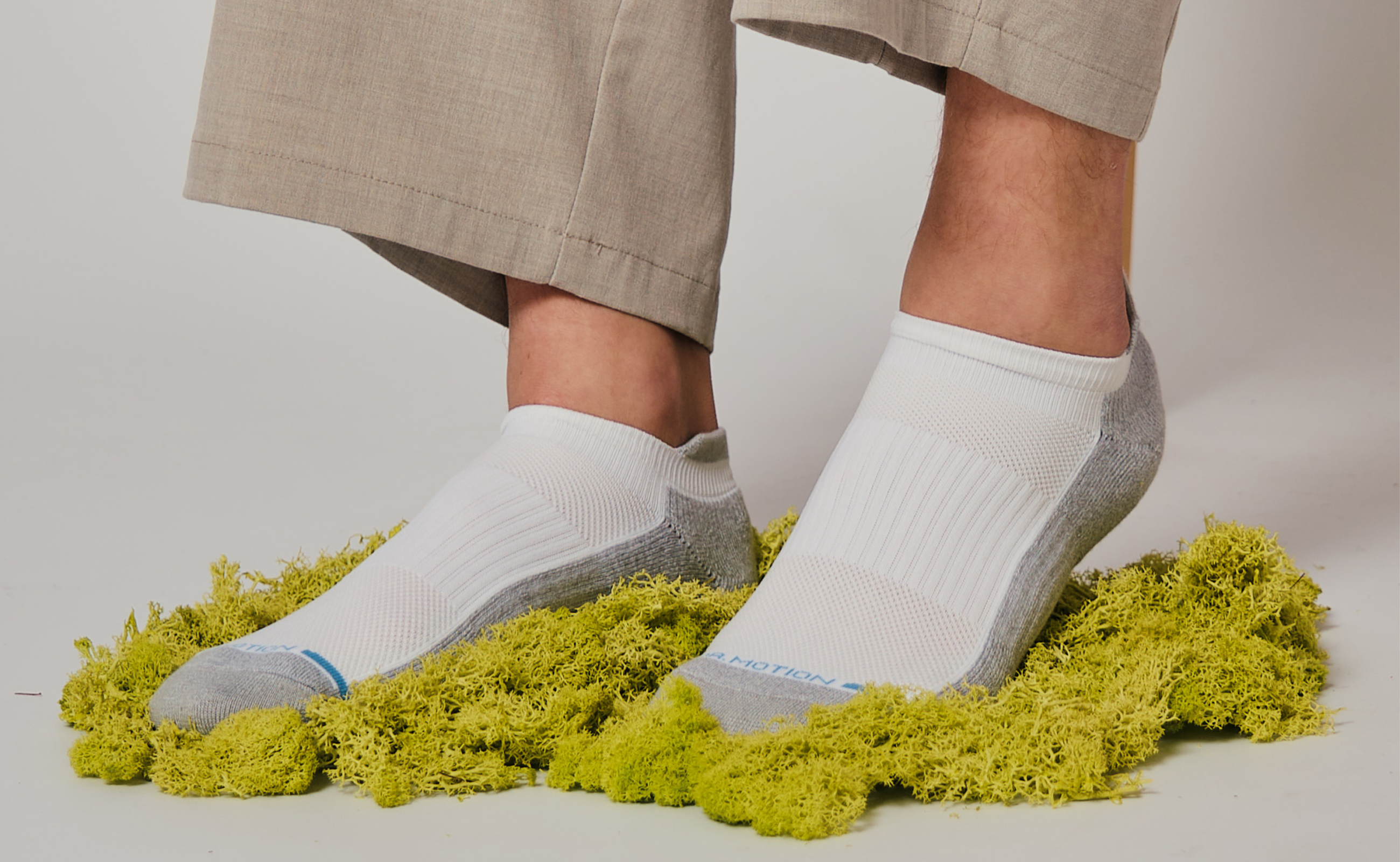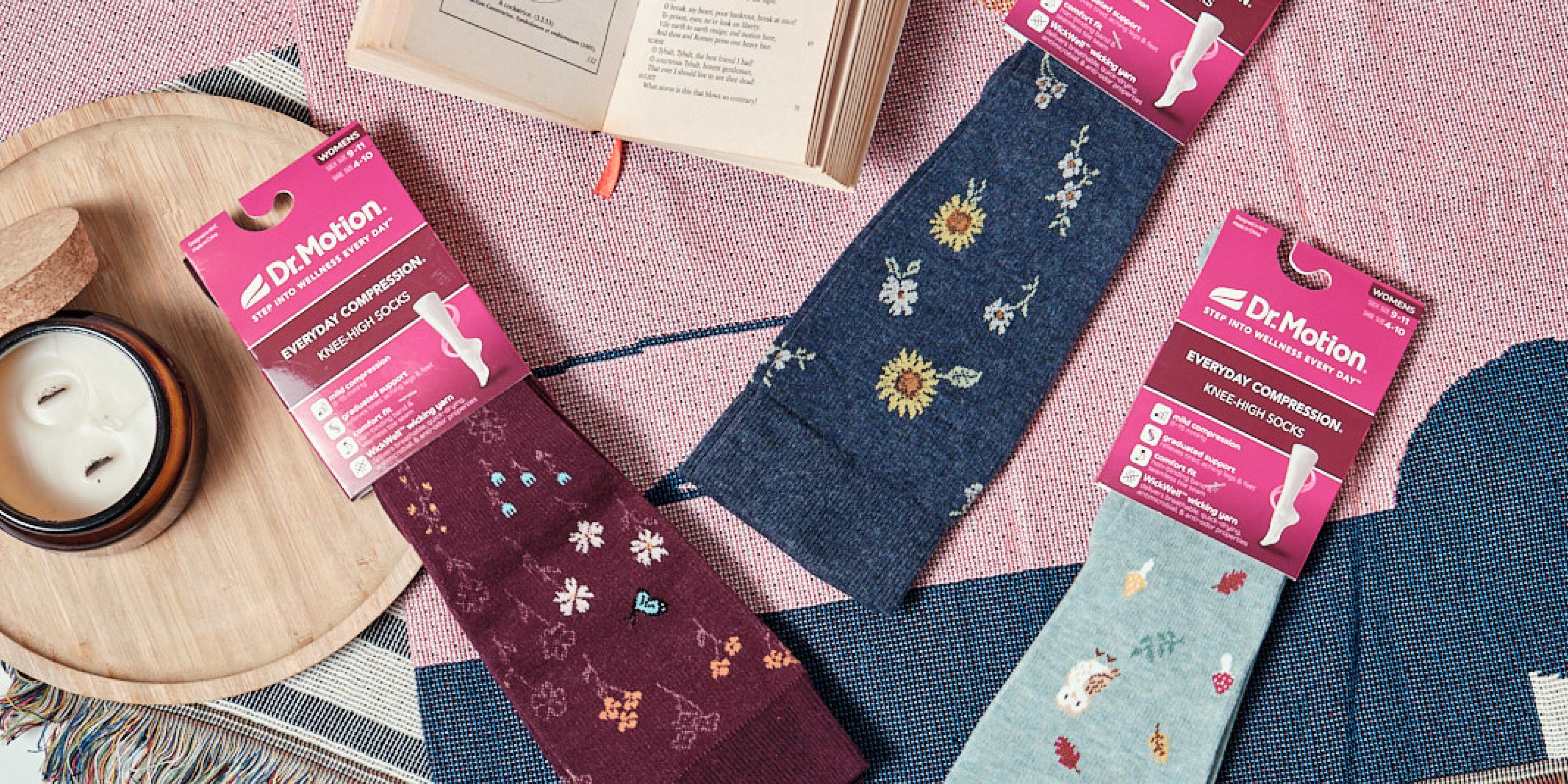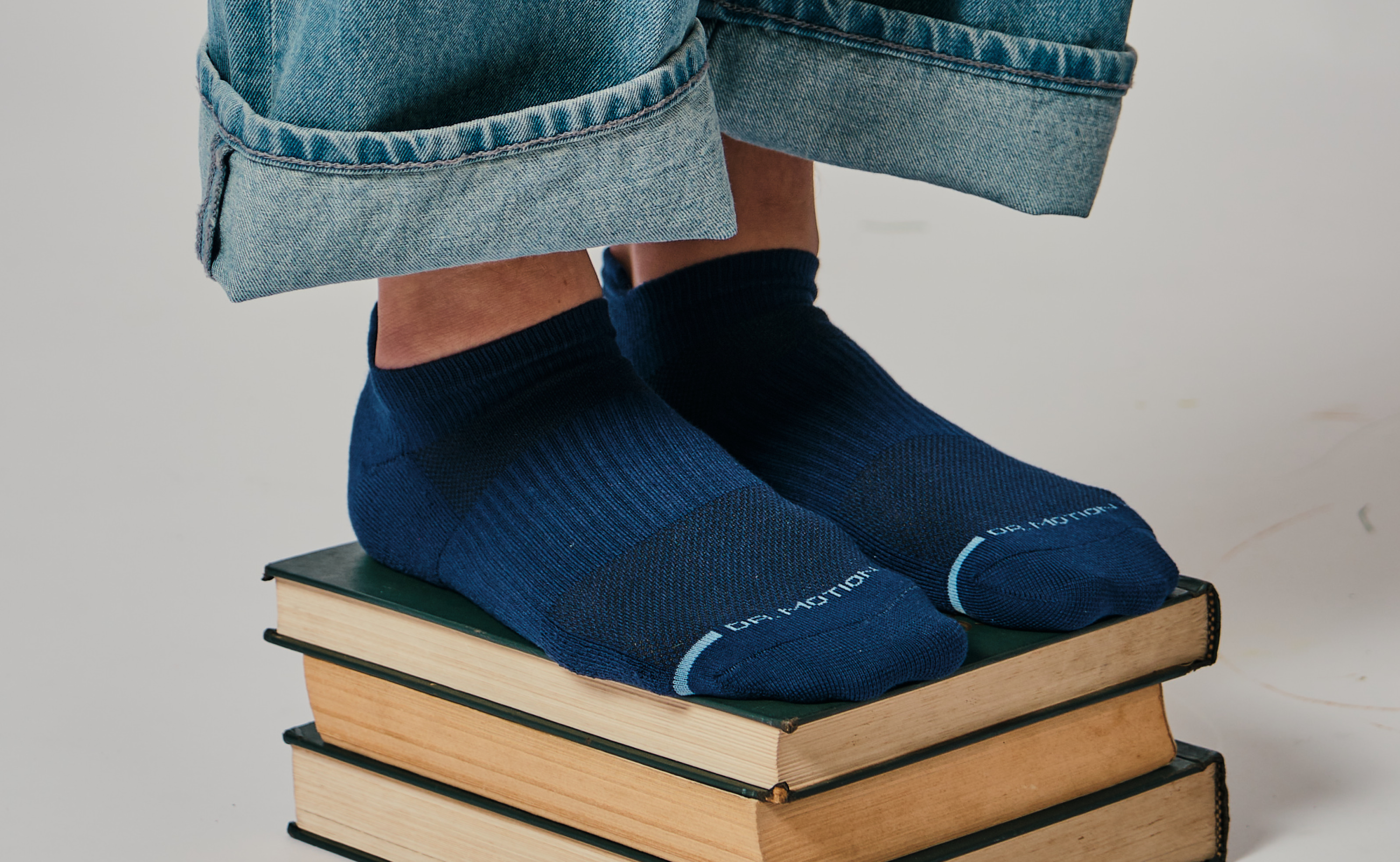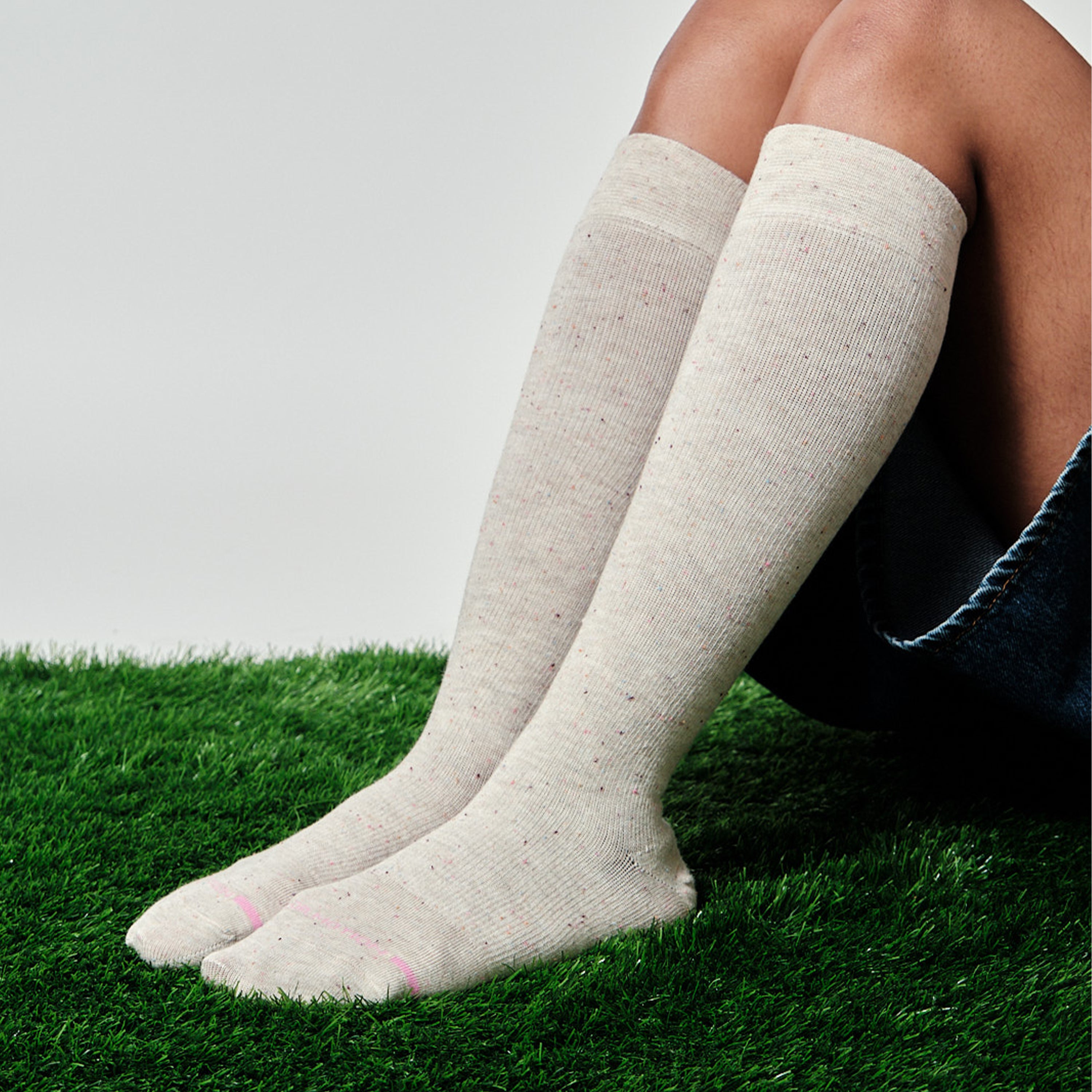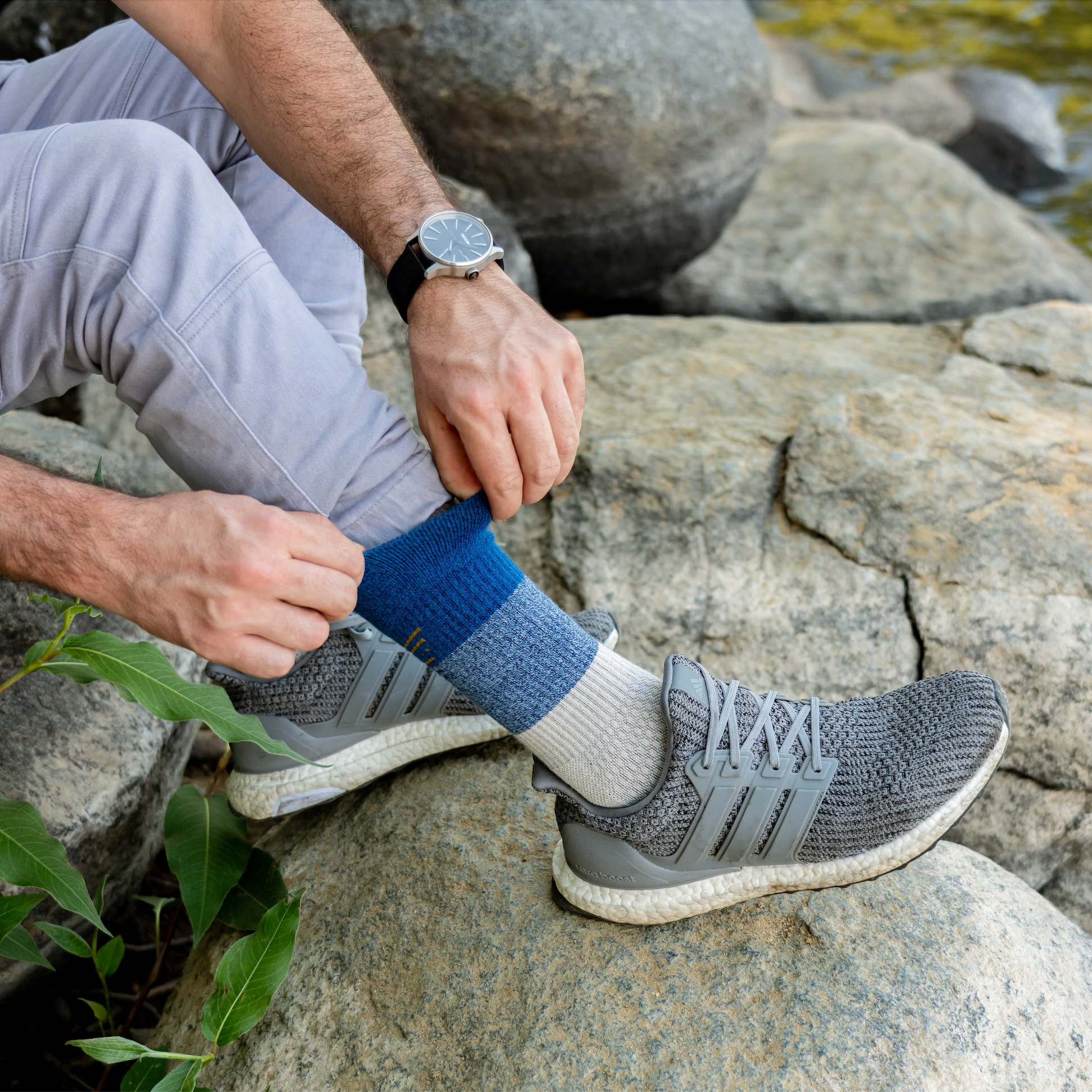Different Classes of Compression Socks
Figuring out which type of compression socks is right for you begins with a bit of research. Learn more about the classes of compression socks in this article! Compression socks can help relieve leg pain, soothe your tired feet and ankles, and help you live a more comfortable life. Today, the options are both stylish and effective: you can look and feel your best.

As you start to research the different types of compression socks available, you might be surprised to find that there's a bigger variety than you thought! That's because there are different classes of compression socks, designed to provide varying levels of support.
Not sure where to start? That's why we're here! Today, we're breaking down each category so you can find the perfect pair.
What are the different categories of compression socks?
Compression socks aren’t one-size-fits-all they come in various categories designed to meet different needs, each tailored for specific activities, lifestyles, or health needs.
Let’s take a closer look at the different types of compression socks available and how they differ.
- Mild Compression: less than 20mmHg or Class 1
- Moderate Compression: of 20–30mmHg or Class 2
- High Compression: greater than 30mmHg, or Class 3
How is the compression level measured?
Compression level in socks is measured in millimeters of mercury (mmHg), which indicates the amount of pressure the sock applies to the leg. This measurement is typically taken at four key points along the leg.
To ensure accuracy and consistency, many leading compression sock brands including Dr. Motion rely on Swisslastic AG St. Gallen (SAG), a globally recognized Swiss testing institute.
SAG uses medical-grade compression testing machines to verify the pressure at each point and ensure the socks meet industry standards for gradient compression.
Understanding the Classes of Compression Socks
Compression socks are designated based on the amount of pressure they provide. The pressure level is measured in millimeters of mercury, or mmHg. In general, the lower the mmHg rating, the lighter the compression will be.
Let's take a look at the most common types of compression socks:
8 to 15 mmHg
Socks with an 8 to 15 mmHg rating have the lightest amount of compression. These types of compression socks will work best as comfortable, everyday socks. While the compression isn't strong, they are ideal for wearers who just need a little more support during the day.
These socks do a great job of keeping your blood flowing and alleviating discomfort in your feet, legs, and ankles. They also reduce swelling, making them ideal for anyone who has to stand on their feet for a long period of time!
8–15 mmHg compression socks in our collection
Our women’s Knee-High Compression Socks are a go-to in the collection, offering gentle 8–15 mmHg compression with a breathable cotton blend for all-day comfort.
The collection also features stylish men’s Knee-High Compression Socks start with our Classic Argyle pattern to elevate everyday support.
15 to 20 mmHg
Need a little more support? You can also find socks in the 15 to 20 mmHg compression range. These offer a little more pressure than 8 to 15 mmHg pairs. Often, this type of compression is found in athletic socks - perfect for enhancing performance, improving circulation, and reducing post-workout fatigue.
15 to 20 mmHg compression socks in our collection
Discover our Sports Performance Compression Socks - crafted for both men and women, these kinds of compression socks deliver enhanced 15–20 mmHg support to boost circulation during workouts or long hours on your feet.
Moderate Compression Socks
Explore the Moderate Compression Socks Collection, crafted for comfort and style with 15–20 mmHg support that helps relieve swelling and tiredness while boosting all-day energy.
20 to 30 mmHg
While most compression socks for everyday wear are between the 8 mmHg and 20 mmHg range, you can also find pairs that offer higher compression. For instance, some might be labeled as 20 to 30 mmHg, and you can also find ones that go as high as 30 to 40 mmHg.
As you shop, you may be drawn to choose the highest compression level. After all, the more support the better, right?
The reality is that wearing socks that are too compressive could reduce blood flow to your legs. This can worsen your circulation issues, rather than help them.
Uniform vs. Graduated Compression
Uniform compression socks deliver the same amount of compression throughout. Graduated compression socks or stockings are usually tighter/more compressed at the ankle and get looser as they travel up your leg.
Our Graduated Compression Tights are a good example. In this pair, the compression rating is 18 mmHg at the ankle and only 5 mmHg at the thigh.
The highest degree of compression is usually reserved for anti-embolism stockings and should only be worn by people who are unable to stand or walk due to surgery or other health conditions. A doctor will usually recommend these to aid in recovery and increase patient comfort.
Why the Right Type Makes a Difference
Choosing the right compression sock isn’t just about picking your favorite color or pattern—it directly impacts how your legs feel, perform, and recover. The perfect level of compression helps promote healthy blood flow, easing soreness and swelling, while the wrong fit can leave you feeling constricted or under‐supported. Whether you’re training for a marathon, clocking long hours on your feet, or simply seeking everyday comfort, the right sock class makes all the difference in keeping you moving pain-free.
Here’s how dialing in on the correct compression level transforms your experience:
-
Improves Circulation: Graduated pressure gently pushes blood back toward your heart, reducing pooling in your ankles and calves.
-
Reduces Fatigue: Targeted support minimizes muscle vibration during activity, so you bounce back faster after workouts or long days.
-
Controls Swelling: Mild to moderate compression combats fluid buildup for those who stand or sit for extended periods.
-
Speeds Recovery: Higher compression levels (20–30 mmHg) can help athletes and post-surgery patients recover more quickly by flushing out lactic acid and reducing inflammation.
-
Enhances Comfort: Styles designed with breathability, cushioning, and the right gradient ensure socks stay snug without pinching or slipping.
Remember, more compression isn’t always better. Overly tight socks can hinder circulation, while too-loose pairs won’t deliver enough support. Listen to your body, consider your daily activities, and when in doubt, consult a healthcare professional to find your perfect fit. By matching your unique needs to the right compression class, you’ll unlock the full benefits these innovative socks have to offer—feel energized, recover faster, and stride through your day with confidence.
Shop Our Selection of Compression Socks
Now that we've shared the main classes of compression socks, are you ready to start shopping? We offer a wide variety of fashion compression socks in our shop, designed to fit any need. From knee-high socks to no-show styles, we have it all. Feel free to take a look at all of our collections and contact us if you have any questions!
Disclaimer: This article provides information solely for educational purposes, including but not limited to text, graphics, images, and other materials contained herein. This article is not intended to substitute for professional medical advice, diagnosis, or treatment. Always seek the advice of your physician or another qualified healthcare provider with any questions you may have regarding a medical condition.



